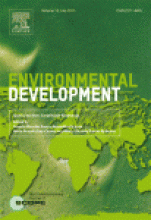 The European Commission has set a long-term goal to develop a competitive, resource efficient and low carbon economy by 2050. Bioeconomy is expected to play an important role in the low carbon economy. This paper provides a review of the policy framework for developing a bioeconomy in the European Union covering energy and climate, agriculture and forestry, industry and research.
The European Commission has set a long-term goal to develop a competitive, resource efficient and low carbon economy by 2050. Bioeconomy is expected to play an important role in the low carbon economy. This paper provides a review of the policy framework for developing a bioeconomy in the European Union covering energy and climate, agriculture and forestry, industry and research.
The Europe has a number of well-established traditional bio-based industries, ranging from agriculture, food, feed, fibre and forest-based industries. This paper proposes an analysis of the current status of bioeconomy in the European Union and worldwide until 2020 and beyond. We estimate the current bio economy market at about € 2.4 billion, including agriculture, food and beverage, agro-industrial products, fisheries and aquaculture, forestry, wood-based industry, biochemical, enzymes, biopharmaceutical, biofuels and bioenergy, using about 2 billion tonnes and employing 22 million persons. New sectors are emerging, such as biomaterials and green chemistry.
The transition toward a bioeconomy will rely on the advancement in technology of a range of processes, on the achievement of a breakthrough in terms of technical performances and cost effectiveness and will depend on the availability of sustainable biomass.
Source
Joint Research Centre (European Commission), press release, 2015-07-14.
Supplier
European Commission
European Union
Joint Research Centre (JRC)
Share
Renewable Carbon News – Daily Newsletter
Subscribe to our daily email newsletter – the world's leading newsletter on renewable materials and chemicals









